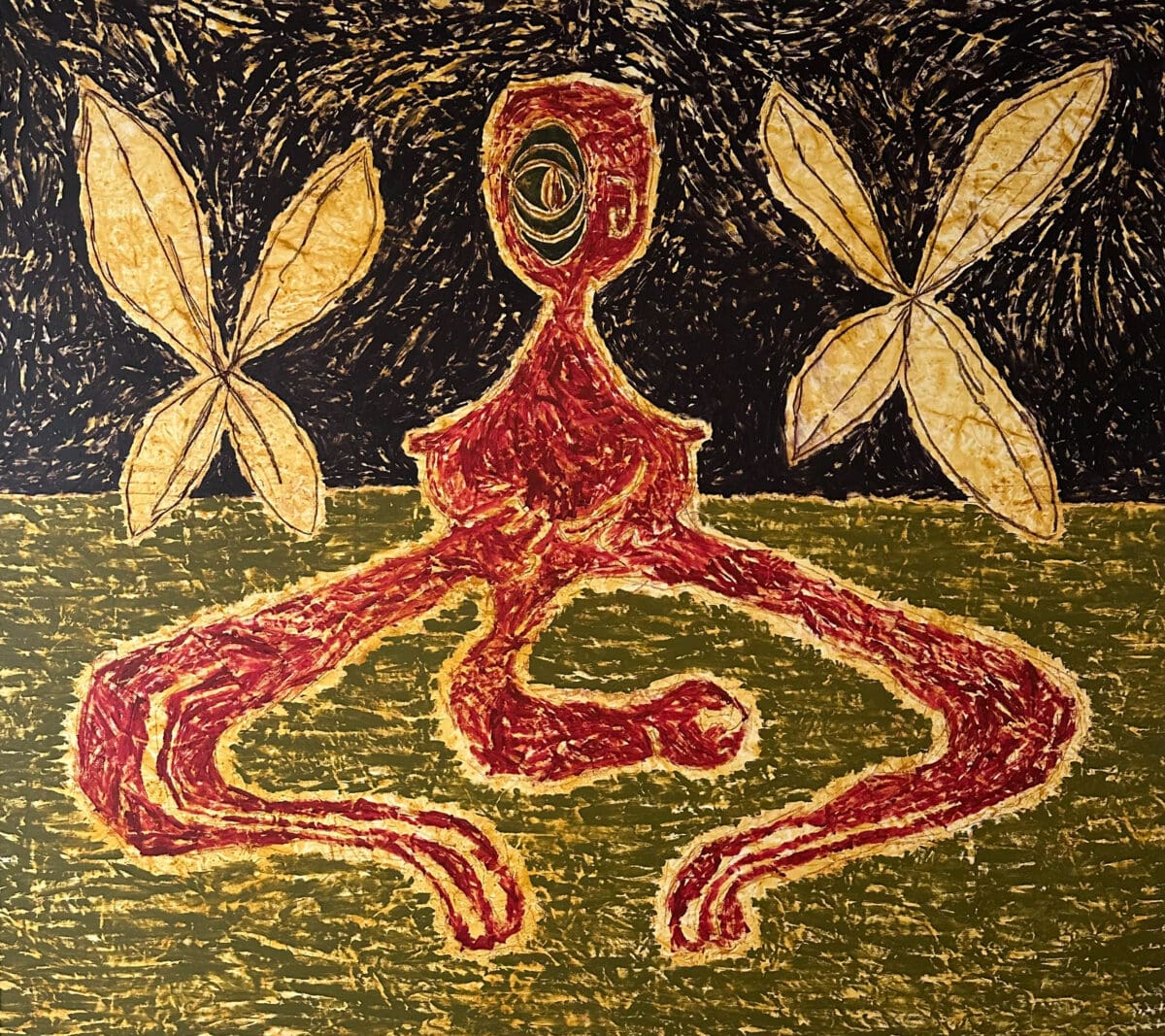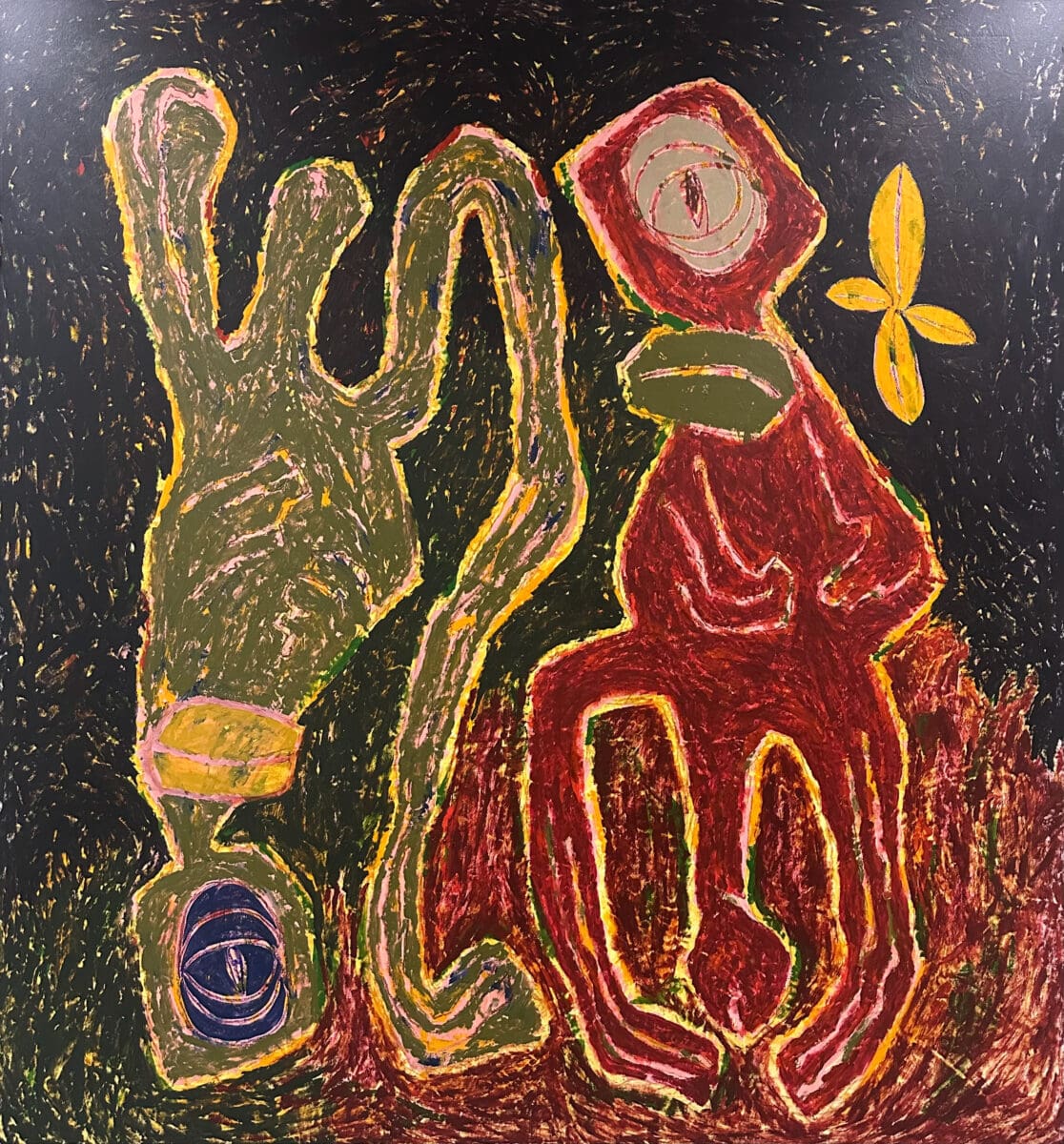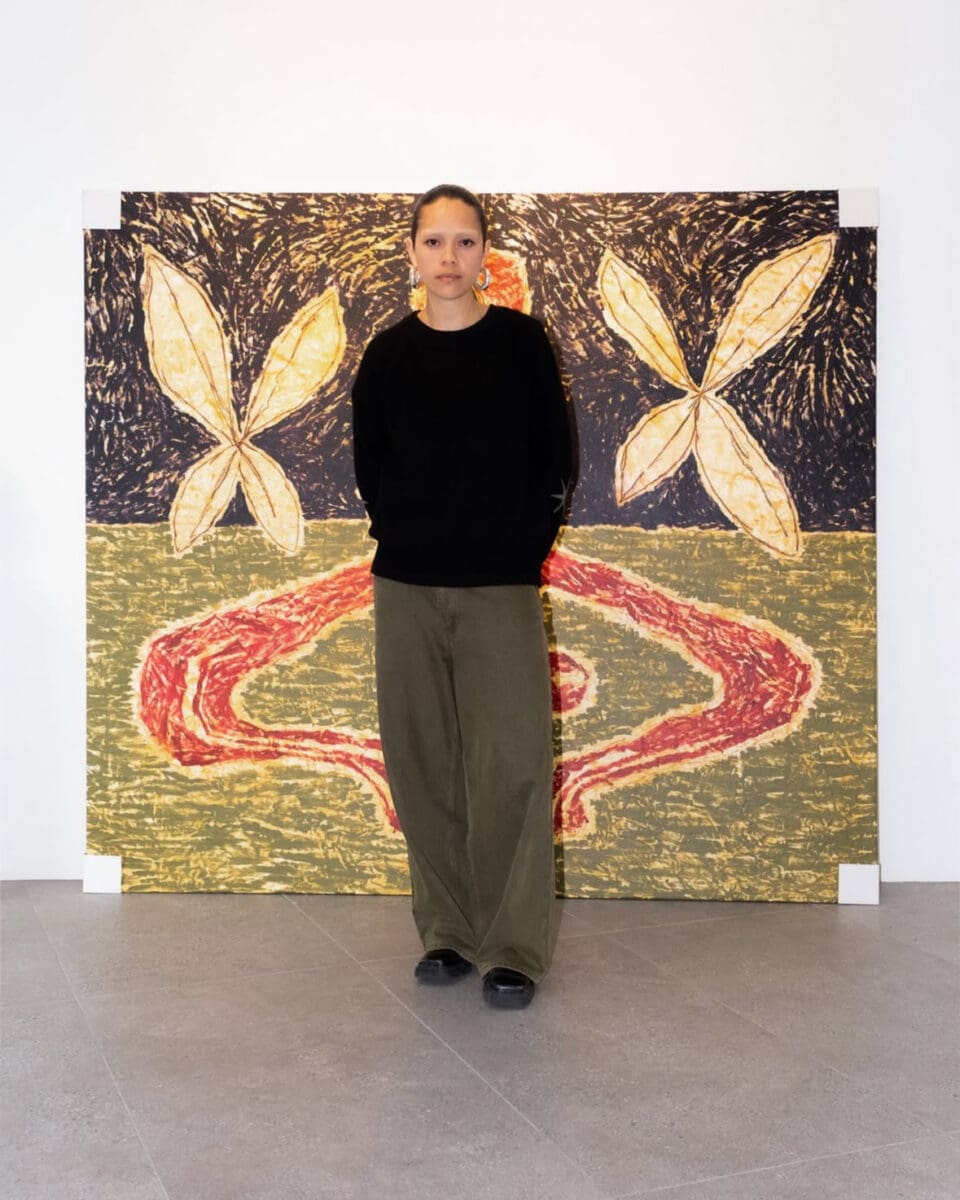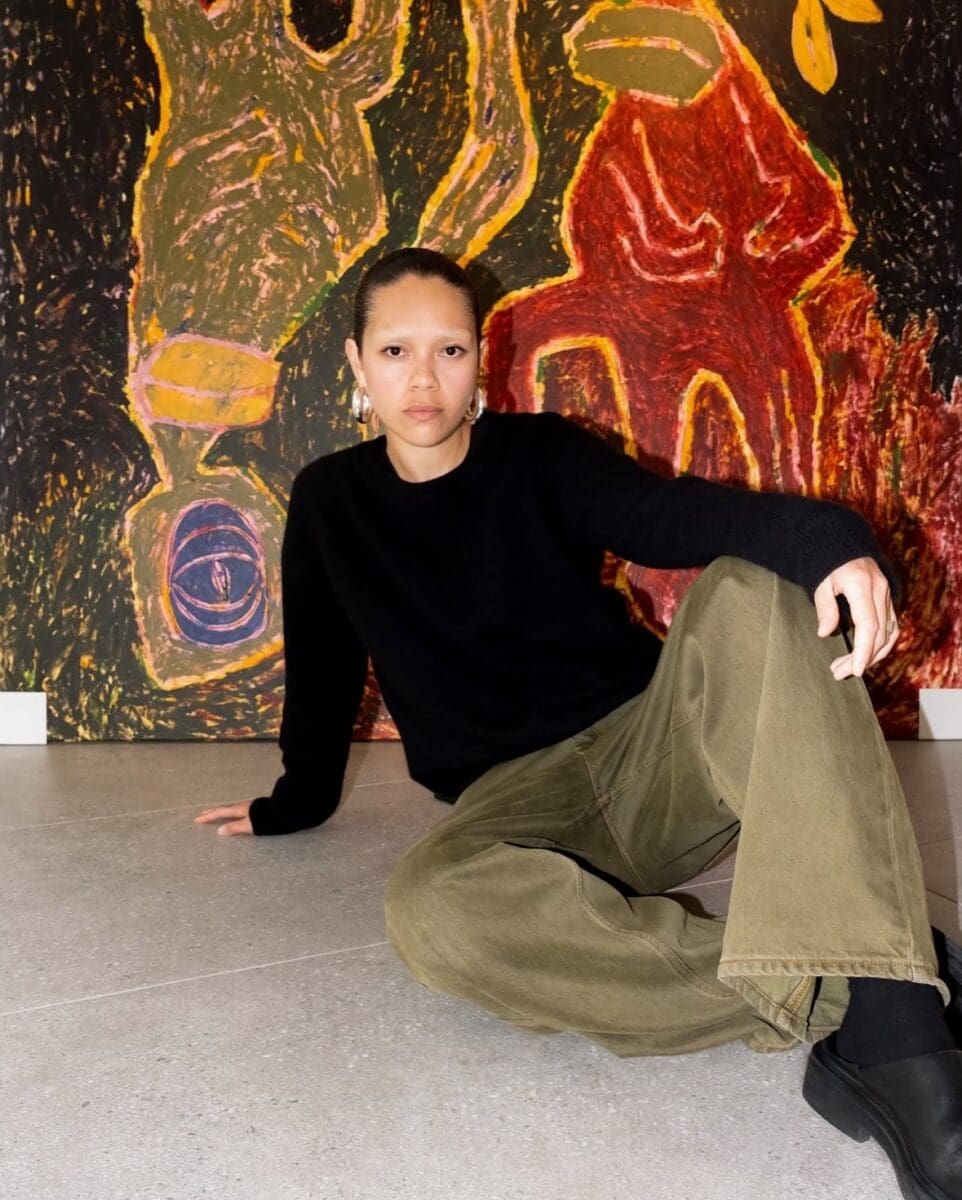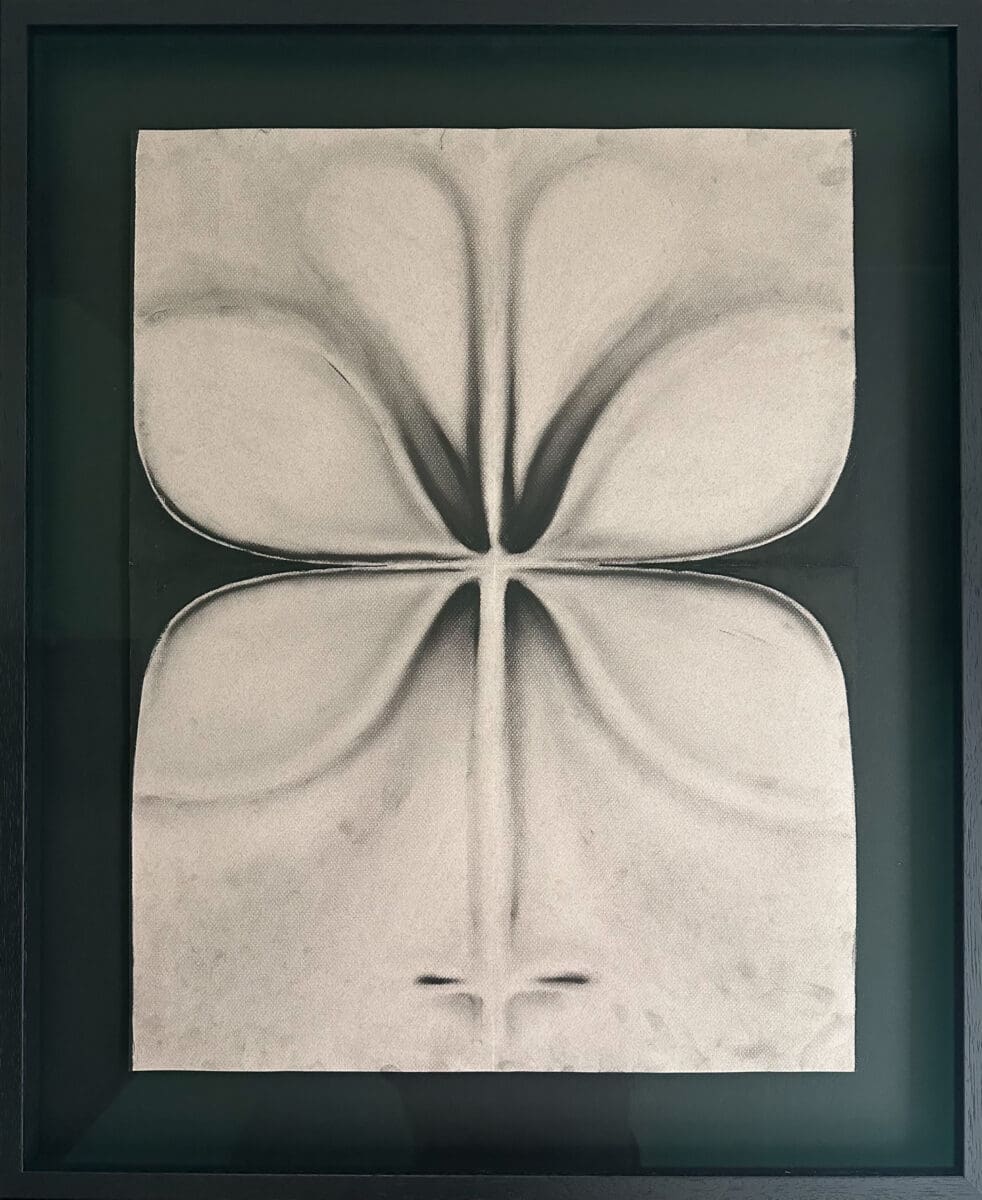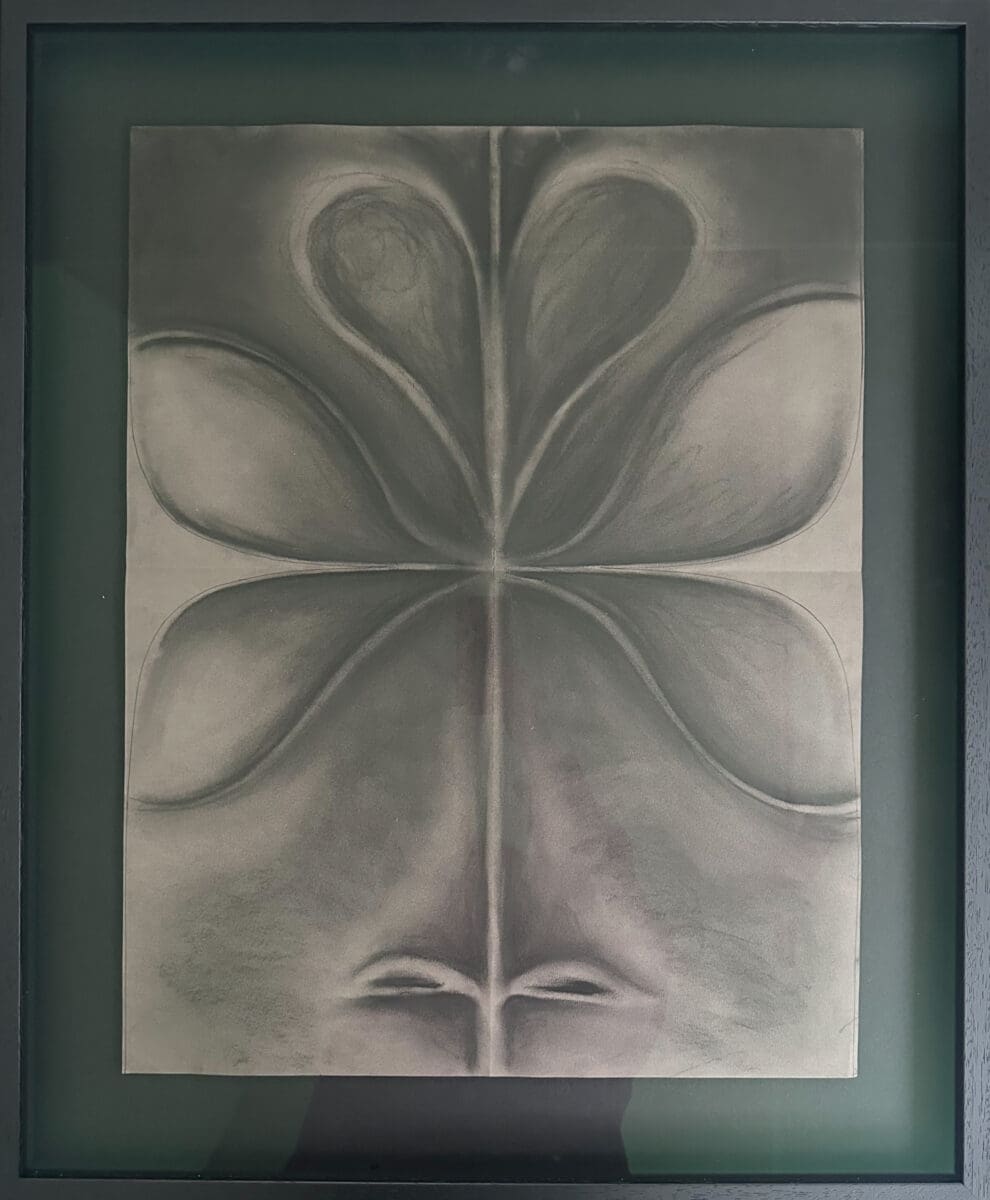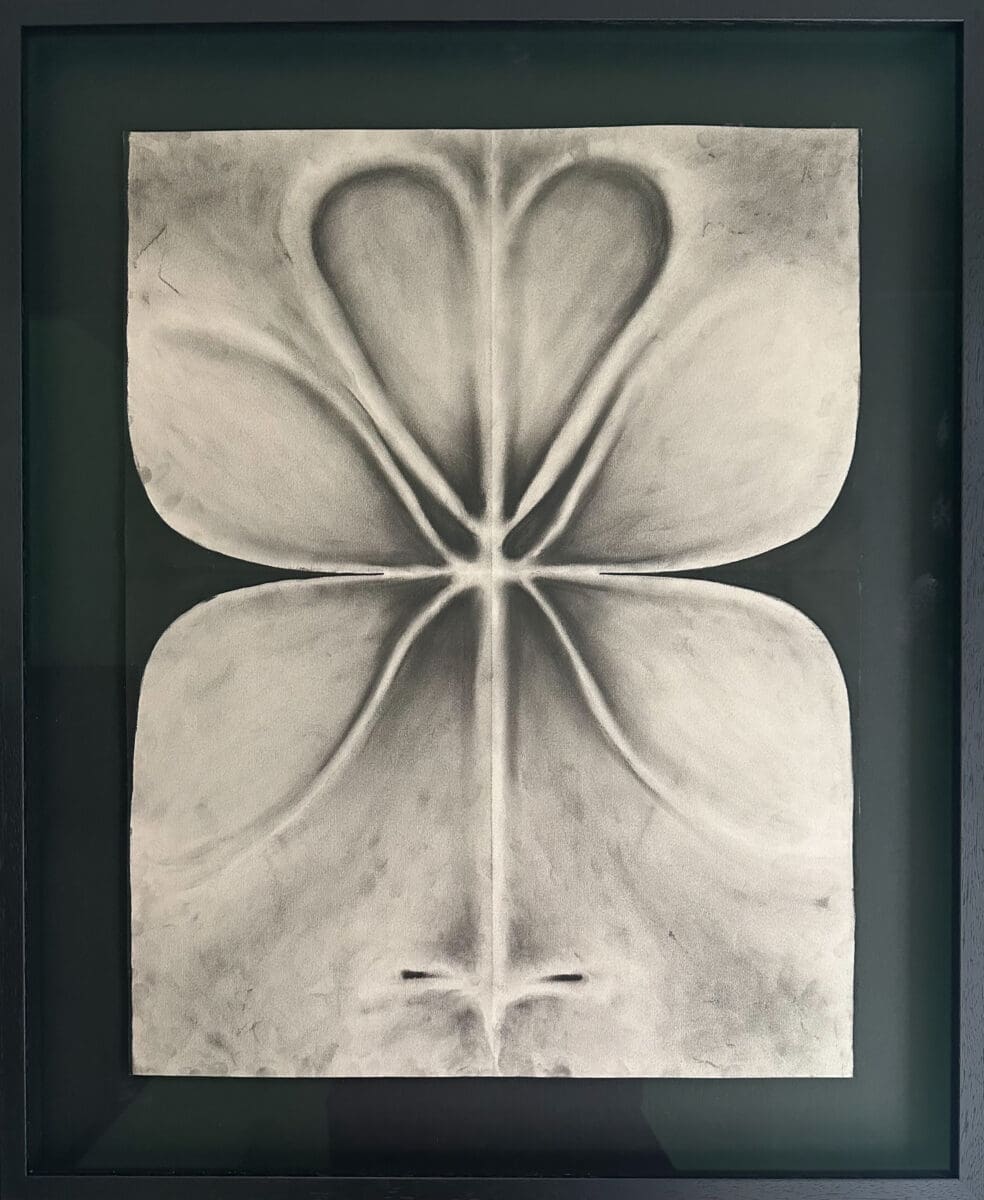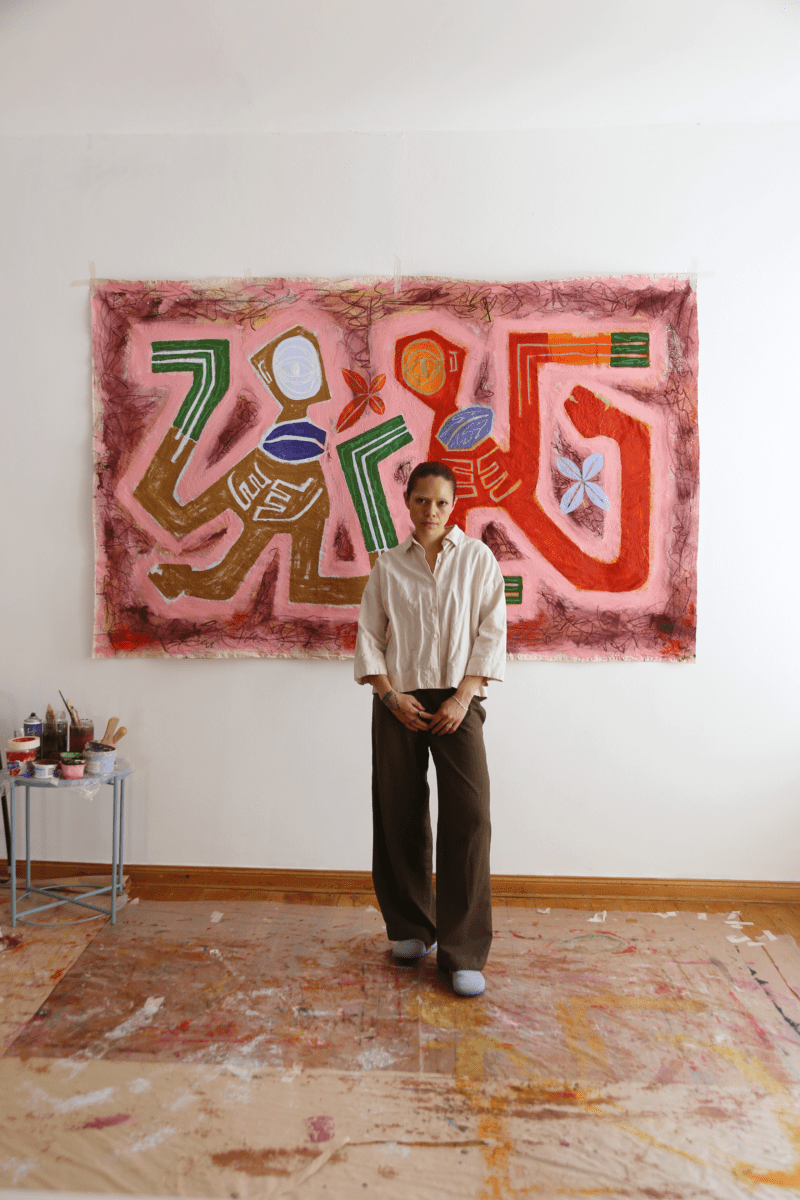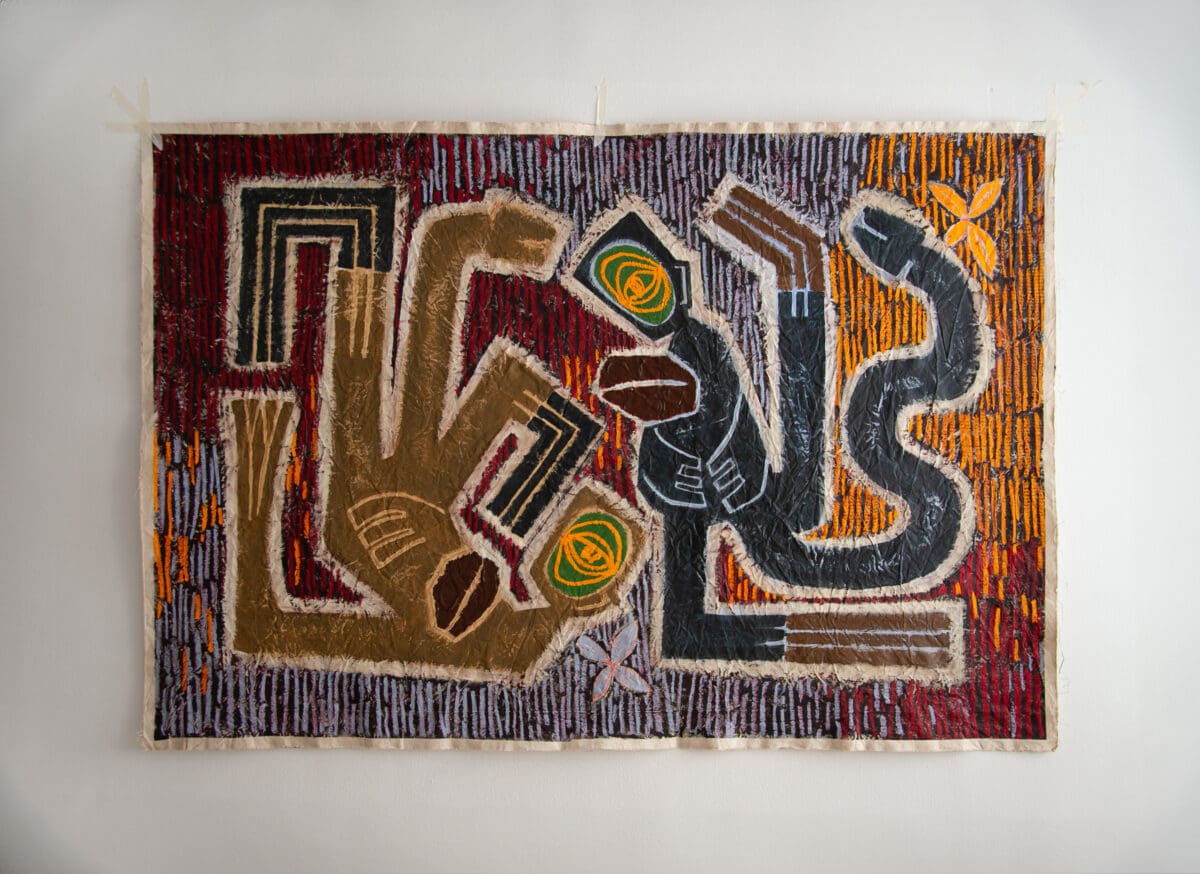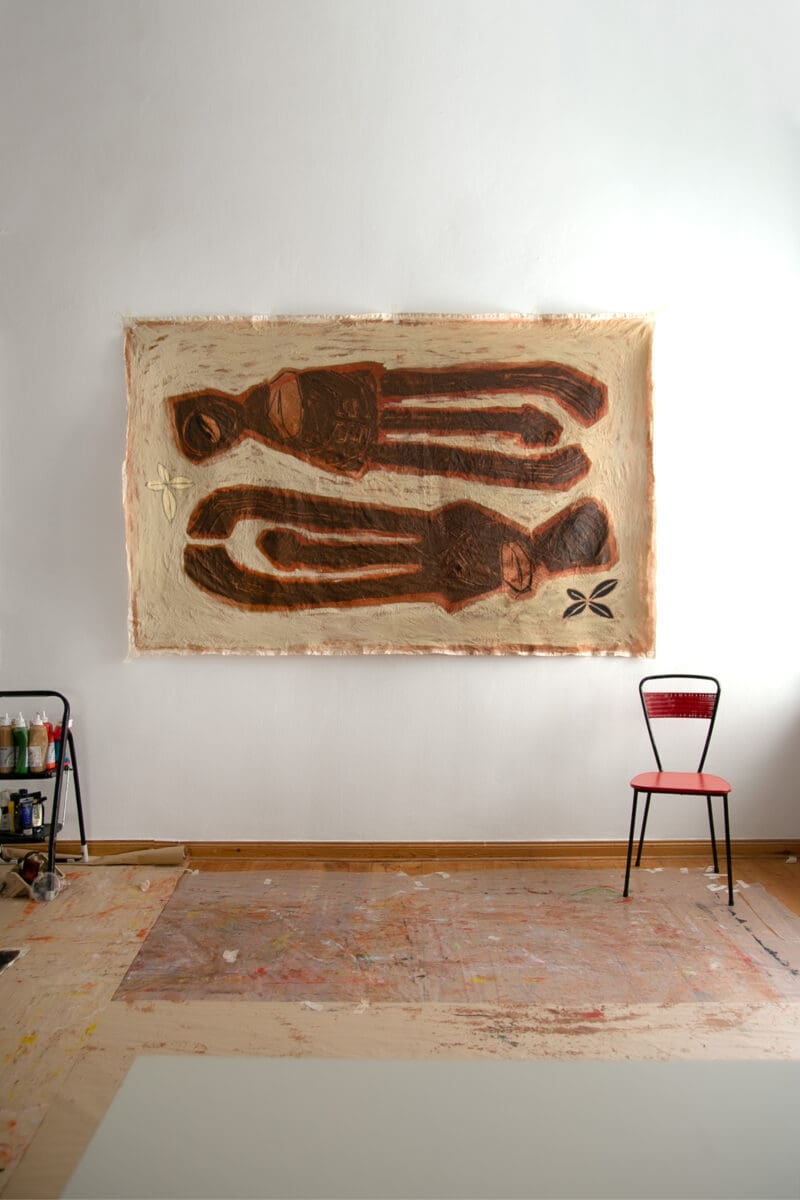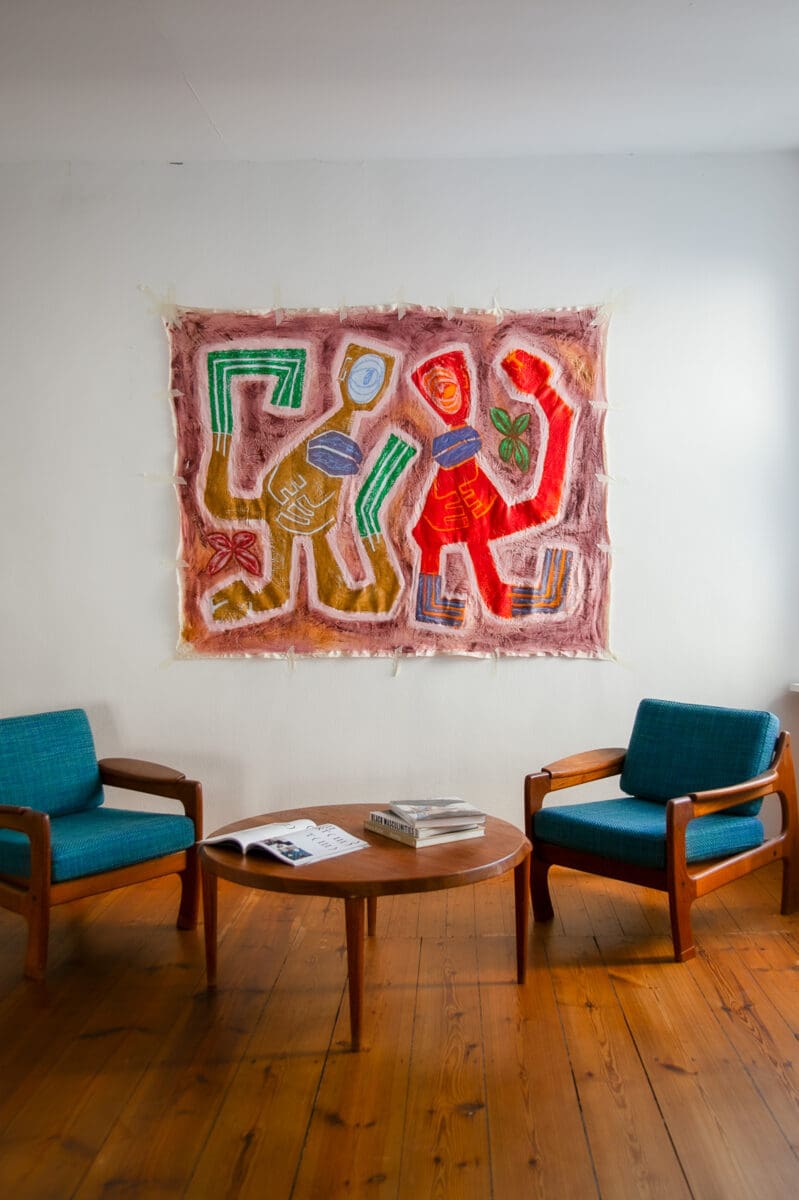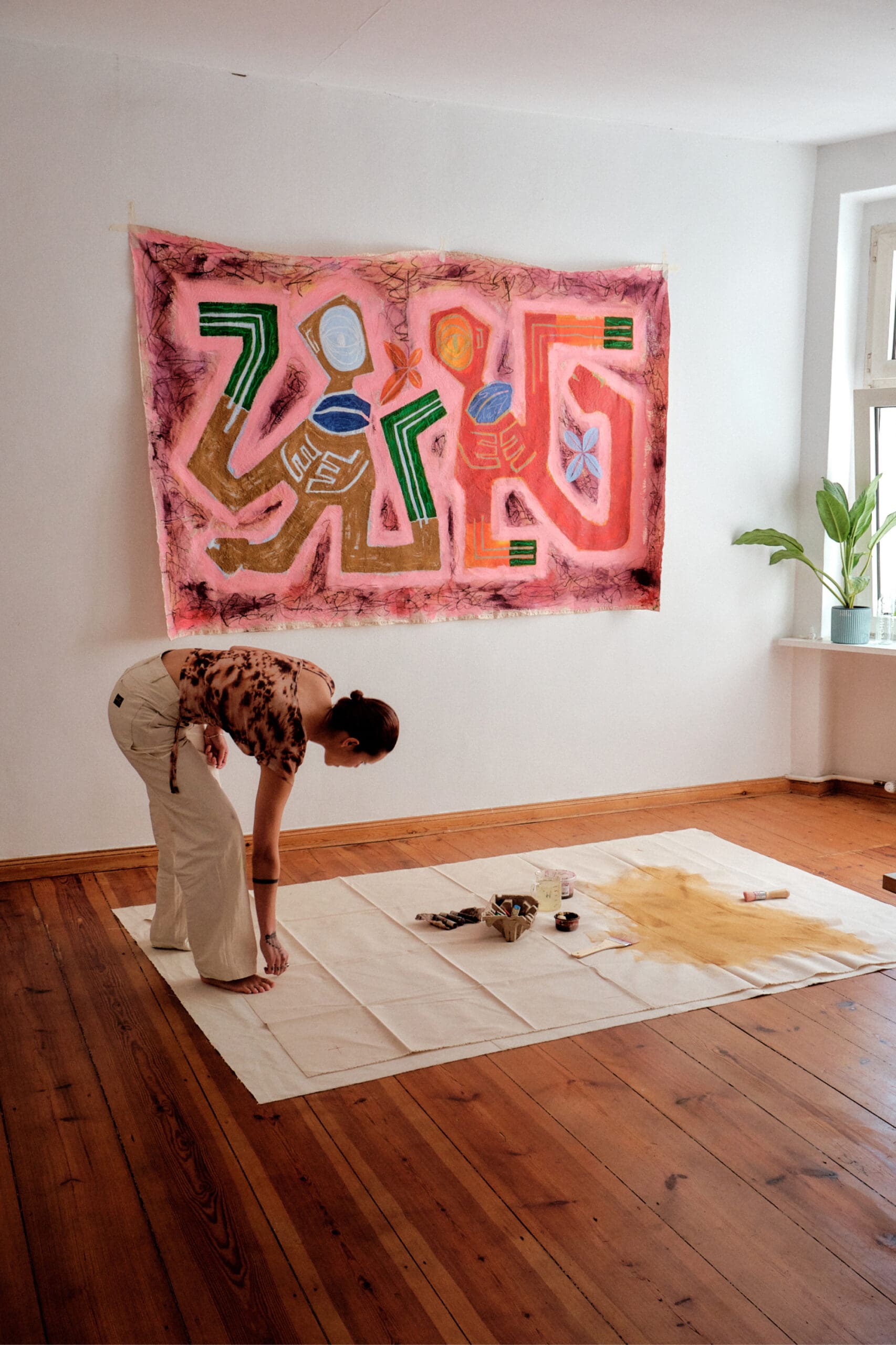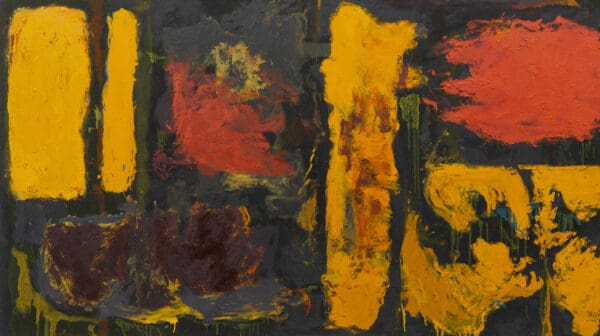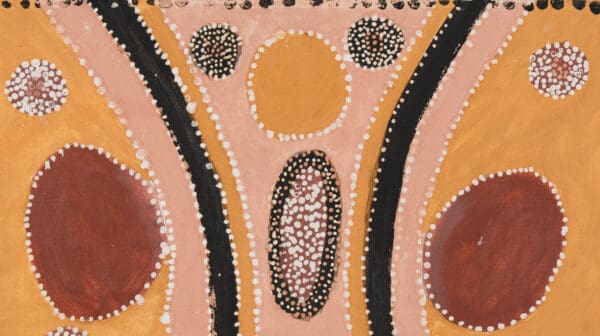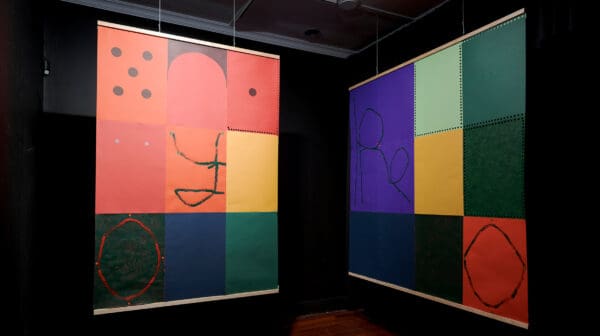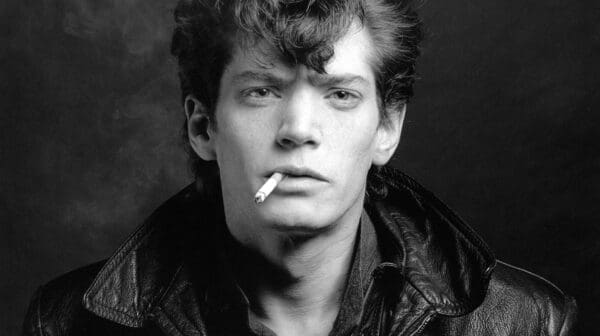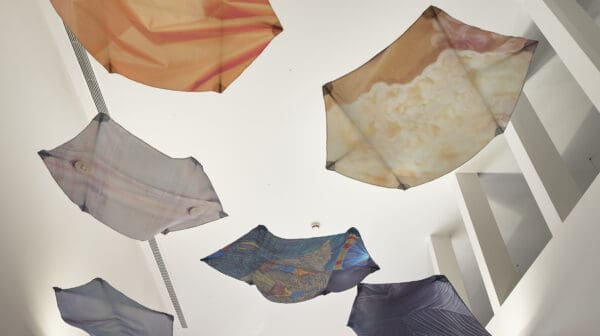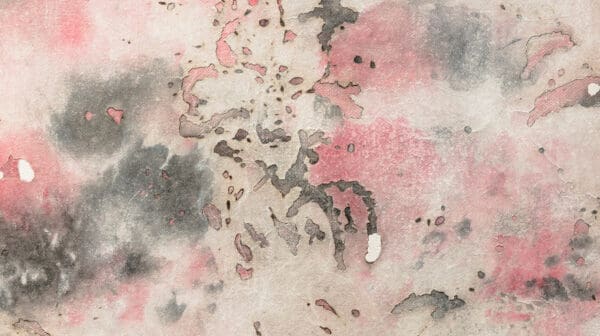Taja Vaetoru has only been painting professionally for almost a year, but the stories they tell through their practice are much older, embodying a deeply rooted ancestral heritage. “When I’m working, sometimes my hands feel like they’ve done certain things before,” they say. “I feel like they’ve practised certain actions for longer than I’ve been around.”
Born in the Cook Islands on Manihiki—one of the world’s most remote inhabited islands—Vaetoru currently lives and works in Berlin, and their first solo exhibition is at .M Contemporary in Sydney. The artist’s large-scale paintings vary in subject, and at times are purely abstract, but many feature the Polynesian deity Tangaroa, the god of the sea. “I’m focusing on what this god is and what it means to me.
What does worship mean to me? What does idolising something mean to me?” There is an intuitive aspect to the way Vaetoru creates, but research has played an important part—sourcing archival images from the Cook Islands to reference certain textures and draw from traditional practices. “Something that I really enjoy with my practice is researching things about my culture, certain traditions, different patterns and ways of doing things,” they say. “The practice has opened up a new space where I can explore my culture and my heritage while I’m so far away. It’s shown how rich it is, and how much I do belong.”
But while tradition is an important reference point, the work is firmly rooted in the present. “I think a lot of people imagine Polynesian work to be very traditional looking. I want them to see a different side, maybe something a bit more contemporary. And for my own people, I want them to see the beauty in their culture, that exists not only in the past but in the present.”
Idol
Taja Vaetoru
.M Contemporary
1—22 May
This article was originally published in the May/June 2025 print edition of Art Guide Australia.




